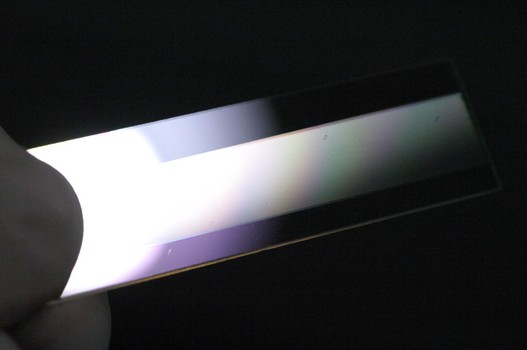Researchers from Massachusetts Institute of Technology and Brigham Young University have overcome the hurdles that will make holographic video displays inexpensive and easy to manufacture. New materials and a new application of the theory of light and sound will make holographic video displays cheap and as big as anyone might want. The development was reported in the edition of the journal Review of Scientific Instruments.
The revolutionary material that makes the image transfer possible is a crystal called lithium niobate. The material is already being mass produced for telephones and acoustic devices. The material forms waveguides that allow acoustic waves to transfer visual images in a much more coherent holographic form than ever seen before. The refraction of light caused by the acoustic waveguides produces a separation of the wavelengths of light that eliminates most of the equipment needed to produce holographic images at present as well as eliminating the noise in the signals.
The researchers expect that this development will reduce the cost of holographic displays by 1,000 percent to about $1,000 for a computer sized display. Common sense tells one that the researchers have already patented the device and the methodology. Once large scale production begins the price will drop and the size of holographic visual displays can grow.
This development could revolutionize television, live performances, and politics. One could imagine a room full of holographic television that anyone can afford. The traveling circus that is entertainment touring might be replaced by a single performance using holographic screens at the most economically advantageous places in a state or a country. One might even be able to see the upcoming Presidential contest in the United States in three horrifying dimensions. The game industry is champing at the bit for this technology.















